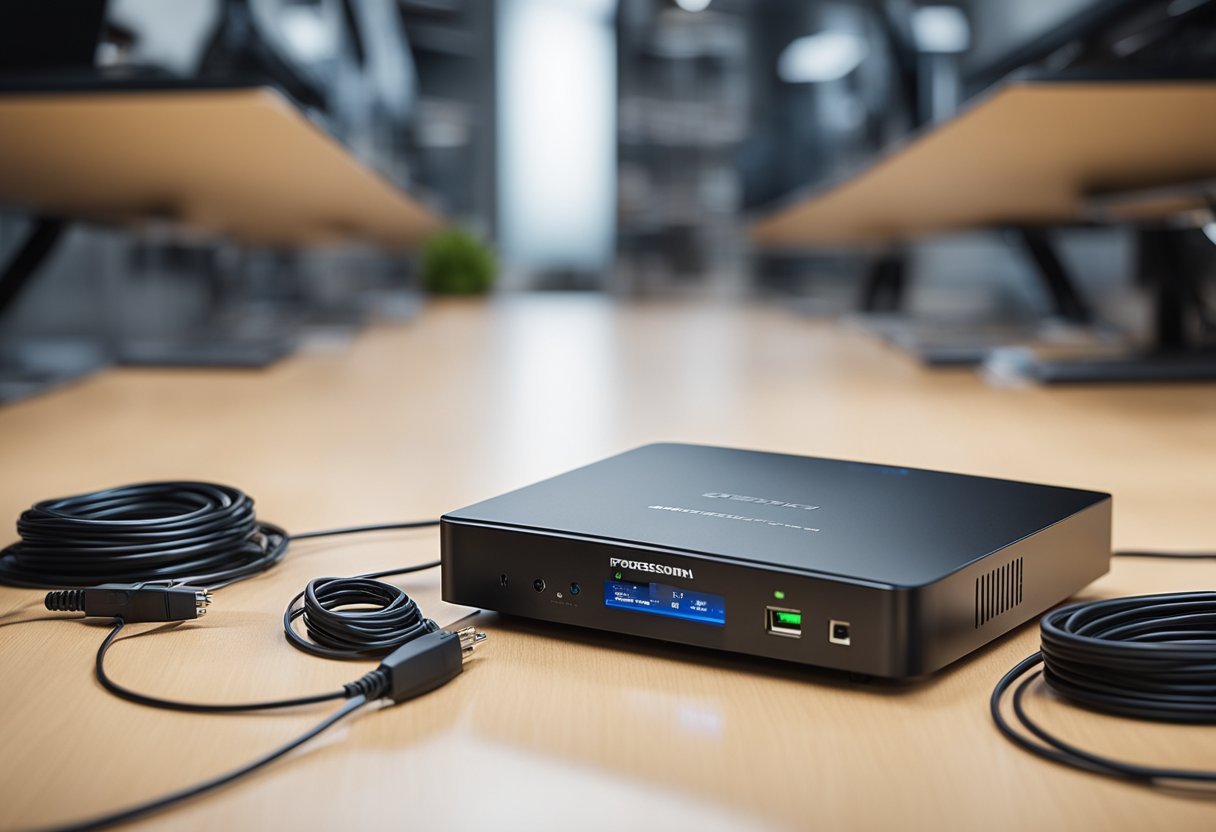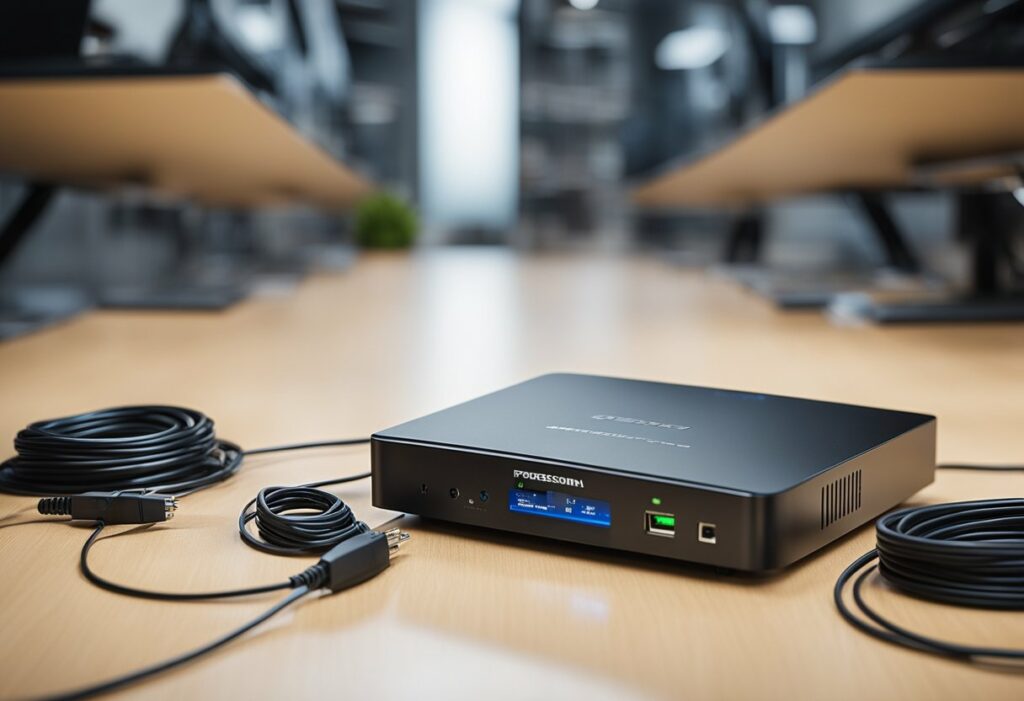Small Office Network Design: Tips and Tricks for Maximum Efficiency
Are you a small business owner looking to design a network for your office? A reliable and efficient network is essential for seamless communication, collaboration, and productivity. But where do you start? In this article, we will guide you through the process of designing and implementing a small office network that meets your business needs.

Designing Your Small Office Network First, you need to determine your network requirements. What devices will be connected to the network? How many users will be accessing the network simultaneously? What kind of data will be transmitted over the network? These are just a few questions you need to answer to design a network that meets your business needs.
Implementing Network Security and Management Once you have designed your network, it is crucial to implement network security and management measures. This includes setting up firewalls, creating strong passwords, and restricting access to sensitive data. You also need to ensure that your network is properly managed to prevent downtime and ensure that your network runs smoothly.
Key Takeaways
- Designing a small office network requires careful consideration of your business needs.
- Implementing network security and management measures is crucial to protect your data and ensure network uptime.
- Regular maintenance and monitoring are necessary to keep your network running smoothly.
Designing Your Small Office Network

Designing a small office network can be a daunting task, but with the right approach, it can be a smooth and simple process. In this section, we will discuss the key aspects of designing your small office network, including understanding network topologies, selecting the right hardware, and planning for growth and scalability.
Understanding Network Topologies
The first step in designing your small office network is to understand the different network topologies available. A network topology refers to the physical or logical arrangement of devices on a network. There are several network topologies to choose from, including bus, star, ring, mesh, and hybrid topologies. Each topology has its own advantages and disadvantages, depending on the specific needs of your small office network. For example, a bus topology is simple and inexpensive, but it can be difficult to troubleshoot if a problem arises. On the other hand, a star topology is more reliable and easier to troubleshoot, but it can be more expensive.
Selecting the Right Hardware
Once you have decided on the network topology, the next step is to select the right hardware for your small office network. This includes switches, routers, access points, firewalls, and other devices. When selecting hardware, it is important to consider factors such as performance, reliability, and cost. For example, you may want to choose a router with advanced security features to protect your network from cyber threats. Similarly, you may want to choose switches and access points that support VLANs and subnets to improve network performance and security.
Planning for Growth and Scalability
Finally, when designing your small office network, it is important to plan for growth and scalability. This means thinking about the future and ensuring that your network can handle the increasing demands of your business. Some key considerations include infrastructure, redundancy, and network diagrams. For example, you may want to invest in high-quality Ethernet cables, such as Cat5 or Cat6, to ensure that your network can handle high-speed data transfer. You may also want to consider implementing redundancy measures, such as backup power supplies or redundant internet connections, to ensure that your network remains operational in the event of a failure.
Overall, designing a small office network can be a complex process, but with the right approach and the right hardware, you can create a reliable and scalable network that meets the needs of your business.
Implementing Network Security and Management

When setting up a small office network, implementing network security and management is crucial. This ensures that your network is protected from unauthorized access, malware, and other security vulnerabilities. In this section, we will discuss some of the best practices for securing and managing your small office network.
Securing the Network Infrastructure
Securing your network infrastructure is the first step in ensuring network security. This includes setting strong passwords for your router, switch, and Wi-Fi network to prevent unauthorized access. You should also enable WPA2 or WPA3 encryption on your Wi-Fi network to protect data from eavesdropping. Additionally, you should enable firewall capabilities to block unauthorized access to your network.
A virtual private network (VPN) is also an essential tool for securing your network. It encrypts all data that passes through your network, making it difficult for hackers to intercept and steal sensitive information. An intrusion prevention system (IPS) can also detect and prevent attacks on your network.
Monitoring and Managing Network Performance
Monitoring and managing network performance is essential to ensure that your network runs smoothly. You need to monitor bandwidth usage to ensure that you have enough bandwidth to meet your network requirements. You should also configure user accounts and permissions to control access to your network.
Web filtering is another important aspect of network management. It allows you to block access to websites that may contain malware or other security threats. Additionally, you should regularly update your network components, such as routers and switches, to ensure that they are running the latest firmware and security patches.
In conclusion, implementing network security and management is crucial for small office networks. By securing your network infrastructure, monitoring and managing network performance, and using tools such as VPNs and IPSs, you can protect your network from security threats and ensure that it runs smoothly.
Frequently Asked Questions

What are the essential components for setting up a smashing small office network?
To set up a successful small office network, you need a few essential components, including a router, switches, network cables, and network interface cards (NICs). The router is the central hub of your network, connecting all devices to the internet and each other. Switches allow devices to communicate with each other, while network cables and NICs provide the physical connections.
How can one ensure robust security in a small office network architecture?
Security is a crucial aspect of any network architecture, and small office networks are no exception. To ensure robust security, you should use firewalls, antivirus software, and strong passwords. You should also restrict access to sensitive data and regularly update your software to prevent vulnerabilities.
What’s the most efficient way to handle data storage in a small office network?
The most efficient way to handle data storage in a small office network is to use a network-attached storage (NAS) device. A NAS device is a dedicated file server that allows multiple users to access files and data from a central location. It provides a cost-effective and scalable solution for data storage and backup.
Could you suggest some top-notch network design software tailored for small office requirements?
There are several network design software options available, but some of the best ones for small office requirements include Cisco Packet Tracer, SolarWinds Network Topology Mapper, and Microsoft Visio. These software packages offer features such as network simulation, topology mapping, and diagramming tools that can help you design and manage your network effectively.
What are the advantages of implementing a server in a small office network setup?
Implementing a server in a small office network setup can provide several advantages, including centralised data storage, improved data security, and enhanced collaboration. Servers can also provide additional services such as email, file sharing, and remote access.
How does one go about selecting a service provider for setting up a small office network?
When selecting a service provider for setting up a small office network, you should consider factors such as experience, expertise, and cost. Look for providers that have experience in setting up small office networks and can provide references. You should also ensure that the provider has the necessary expertise to handle your specific requirements and that their pricing is transparent and competitive.



